Discover the key factors often confusing anglers when selecting the right fishing rod size. In this comprehensive guide, we delve into the challenges faced by fishermen and provide expert advice to overcome them. Explore the advantages of short versus long fishing rods, uncover the benefits of proper length for different fishing techniques, and gain insights into choosing the ideal rod size for your fishing adventures. Whether you’re a seasoned angler or a beginner, this article is a must-read to enhance your fishing experience and ensure success on the water.
Does the length of the fishing rod matter?
Yes, the length of the fishing rod plays a vital role as it can affect the ability to cast and distance.
Firstly, categorize the fishing rod into two groups; shorter rods and longer rods.
Shorter fishing rods |6 feet or less| are ideal for accurate and short casting, suitable for fishing in tight spaces. This fishing rod is also perfect for areas with less clearance, like dense vegetation or brushy shorelines. So, the shorter fishing rod provides control when casting the smaller fish, but still, expert technique is required. It is suitable for fishing from kayak as well as smaller boat. Longer fishing rods |more than 6 ft| provide a longer casting distance, especially when casting in areas like open water, lakes, and surf fishing from the shore. It gives leverage and enables to produce power and control during the fish with larger fish.
The purpose of fishing rod length:
Standard rod lengths in bass fishing have undergone significant changes in the past decades. Back in the 1960s, the fiberglass rods of 5 ft. were the norm. Reels were less advanced than today’s model, resulting in limiting the distance of conventional bait could be cast.
In the early 1970s, the Flippin’ technique gained popularity by adding a 2 ft. length to the standard fishing rod. At that time, the advantage of adding length was described as only leverage.
After recognizing the benefits of longer fishing rods, the manufacturers started manufacturing longer rods for each technique, extending beyond just Flippin’.
Longer rods enhance fishing performance and support techniques like crank-bait fishing (enabling deeper dives on longer casts) as well as fishing in clear water; the primary purpose is to reduce the visibility of fish. Because in clear water conditions, due to high visibility, longer casts are necessary to avoid spooking the fish. If you see the fish, it means they can see you too. So, casting from a longer distance can enhance the chances of catching them.
Over time, equipment advancements and benefits have led to longer rod lengths becoming the standard. Now, various rods with different lengths have been introduced in the market. These rods are designed to target different species, and each fishing rod length benefits specific fishing techniques.
Note: “Spooking the fish” refers to a situation where the presence of a fisherman or any of their action scares the fish; they, in response to danger, are less likely to bite the bait and swim away.
Over the years, more focus has been given to understanding the importance of fishing rod length because it supports the fundamental aspects of all fishing techniques:
Accuracy:
Shorter fishing rods provide a more accurate cast when we want to do casting on shorter distances. Because shorter rods are more maneuverable in these areas, less energy is required to handle these rods.
The short fishing rods of 6 ft. or less are perfect for short and accurate casts. It allows you to have more control over your lure placement, especially in situations where pinpoint accuracy is necessary. So, this can be advantageous for fishing in dirty and dingy water, where visibility is limited.
On the other hand, when pinpoint accuracy is less demanded and you are casting in open water or conditions where longer casts are required, a rod length of 7 ft. or more is perfect.
Distance:
Longer fishing rods make it easier to cast over long distances. When casting longer distances, it becomes more challenging to maintain pinpoint accuracy in case of shorter distances.
Leverage:
In longer and heavier action fishing rods, the need for leverage becomes essential during the hook-set because longer fishing rods move more quickly and are stiffer due to the presence of heavy action that reduces the energy loss, leading to less flex. This approach supports targeting larger fish or when using single-hooked baits such as plastic worms or jigs, where the heavy hook set is necessary so that it can tangle deep into the jaws of fish.
On the other hand, when you are using treble-hooked baits such as crank-baits and jerk-baits, the lighter rod action is required to maintain tension on the line that prevents the fish from throwing or shaking off the hooks. The more lightweight rod actions play a vital role in absorbing the initial surge of fish and keeping the hook embedded in the mouth of the fish.
Comfort:
Choosing the right fishing rod length is a personal choice when it comes to comfort, and you need to be honest with yourself before making the decision. Various rod lengths are available, and anglers should choose one that also aligns with their personal physique and comfort rather than mindlessly following the recommendations from professionals.
Ways to find the perfect fishing rod length:
Fishing rod varies from 4 to 15 ft. When you have many options, choosing the best rod supporting your fishing techniques takes work. Fishing in fresh and saltwater requires different styles and specific rods that support your overall performance. So, for this, you need to understand certain things like fishing rod power and action and different rod lengths.
How does the size of the fishing rod determine the rod’s power and action?
The length plays an integral part in determining the action and power of the fishing rod. But how? Regarding action, the length of the role influences how much and from where the rod bends under the applied pressure. The short fishing rods tend to produce the faster action, which means they bend at the tip, whereas the longer fishing rods tend to make the slower action, which means they bend more than the shorter rods. The action of a fishing rod defines its sensitivity to lures. Similarly, the faster action is considered more responsive.
While fishing rod power guides how broadly pressure is needed to flex the rod. The length of a fishing rod is the indicator of power rating and represents the range of lure weights, the size of the fish, and the strength of the line that the fishing rod can effectively handle.
Length guide of fishing rod for a type of fish:
Anglers and novices must understand which length of a fishing rod is needed before making purchases. This should be done by keeping in view the rod’s performance as well as the comfort of the anglers.
Diverse fish species are present in different sizes. So, choose the rod length that is according to their size, and don’t forget lures and baits.
The table gives an understanding of the length of fishing rods, baits, and lures that are required for targeting species.
SPECIES | ROD LENGTH | TOP FLIES | TOP FLIES |
Trout | 8 – 9 ft. | Small poppers, terrestrials, nymphs, streamers | Spinners |
Pan-fish | 8 – 9 ft. | Small poppers,
Terrestrials,
Nymphs,
streamers | Spinners |
Bass | 8.5 – 9.5 ft. | Deceivers, larger poppers | Soft lures, surface lures, spinner-baits, jigs, spoons, plugs |
Pike
| 8 ft. | Large pike flies, divers, large poppers | Spinner-baits, spoons, spinners, surface lures |
Salmon | 8.5 – 9.5 ft. | Nymphs, eggs, streamers | Spoons, spinners, plugs |
Steelhead | 9 – 10 ft. | Nymphs, eggs, streamers | Spoons, spinners, plugs, and crank-baits |
Saltwater (General) | 8.5 – 9.5 ft. | Carbs, shrimp, crazy Charlies, deceivers, minnows | Soft lures or jigs |
Striped bass | 8.5 – 9.5 ft. | Deceivers | Spinners, Spoons |
Bonefish | 8.5 – 9.5 ft.
| Shrimp, deceivers, carbs, crazy Charlie | Skimmer jigs |
Tarpon | 9 ft. | Saltwater popper minnows | Jigs |
Billfish | 9 ft.
| Large specialty, large saltwater poppers, billfish flies | Trolling lures |
Carp | 10 – 13 ft. | Nymphs, carp bugs, hammerhead | Lures, floating baits, power baits, soft plastic worms |
Catfish | Small catfish (pond): 6 ft.
Average: 7 – 9 ft.
Larger: up to 10 ft.
| Sculpin and crayfish patterns,
Ugly and big flies | Crank-baits, stink bait |
FISHING ROD SIZE CHART According to fishing technique:
Various types of fishing rods are present in the market for each fishing technique.
Fishing rod type | Length Range | Commonly used lengths | Applications |
Spinning rod | 4’5” to 9’5” ft. | 6’ to 7’5” ft. | Bobber fishing, surf fishing, bottom fishing, live lining, casting lures |
Bait-casting | 5’5” to 9” ft. | 6’5” to 8’ft. | Lures or rigs |
Flying fishing rod | 6’ to 10” | 7’ to 9’ | Fly fishing |
Surf-casting | 9’ to 14’ ft. | 10’ to 12’ ft. | Surf fishing |
Boat rod | 5’ to 7’ ft. | 6’ to 6’6” ft. | Boat fishing |
Trolling rod | 9’ to 14” ft. | 9’ to 11’ ft. | trolling |
Ice fishing rod | 20” to 48” (inches) | 28 to 36."
(inches) | Ice fishing |
Spinning rod length:
These fishing rods are user-friendly, versatile, and best for sport fishing. Its length varies from 4’5” – 9’5” feet and can be used for bottom, live lining, bobber, and surf fishing. The spinning fishing rod comes with short, medium, and long-length ranges.

Short spinning rod
It has a length range from 4’5” to 6 feet and is typically used for kayak fishing, where there are hurdles and obstacles like bushes and trees in small creeks. Because the limited space in a kayak makes it tough to handle the longer pole, a short spinning rod is ideal for such situations and allows the angler to cast easily with proper control and run the fishing pole while sitting in a kayak with accuracy and using adequate fishing techniques. However, the longer rod in such areas is more prone to get tangled due to surrounding vegetation and cause frustration.
Medium spinning rod
It has a length range from 6’ to 7’5’’ ft and is considered the most versatile rod by anglers. The medium spinning rod provides the casting experience with a balance of distance, accuracy, and sensitivity. The rod is most versatile and used for various fishing techniques such as bait fishing, bobber fishing, and other standard fishing techniques. The medium spinning rod is well-suitable for targeting the species of freshwater and saltwater. This rod is recommended for novice anglers because it is easy to handle; its length and action combination provide an excellent balanced experience for the motive of learning new techniques of fishing as well as gaining experience by using different types of baits and lures. The fact that a medium spinning rod gives the balance of sensitivity means it enables the angler to notice the bite or any movement occurring from the fish. This level of sensitivity helps to detect the strikes.
Note: Novice angler refers to someone at the initial stage of learning the fishing techniques with limited experience but still eager to learn and develop new skills.
Long spinning rod
It has a length range from 7’6” to 9’5”ft and is considered helpful for long casting distances such as lure or surf fishing. This type of fish is beneficial for either targeting a species that is at a distance or fishing in conditions where covering a more extended area is necessary. This rod is famous among surf anglers for effectively fishing from beaches, piers, jetties, and rocky shores to access the fish from the water depth. It is the best suitable rod for musky, pike, and bass typically found in open water, requiring longer cast to attract a strike.
What’s the difference between a spinning rod and a casting rod?
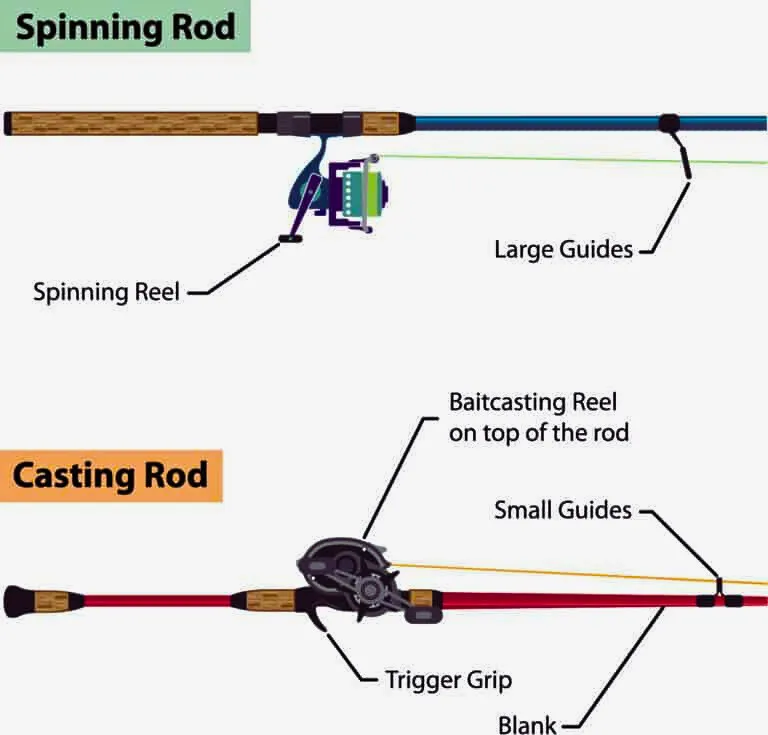
The spinning rod is constructed for the spinning reel attached below the rod, where the line guides are directed downward. However, the casting rod is constructed for a bait-casting reel attached at the top of the rod, where the line guide faces upwards. The spinning rod is best for beginners, and the casting rod is suitable for experienced anglers, providing accuracy and control.
Bait-caster rod length:
Bait-caster rod is the most popular fishing rod for experienced anglers because it provides a balance of accuracy and control while fishing. This type of fishing rod is a bit longer than a spinning rod. This type of rod is used for both fishing experiences in freshwater as well as saltwater. With trolling techniques, it can also handle various fishing tools, such as lures and rigs. Likewise, spinning and bait-caster rods are also divided into different length ranges.
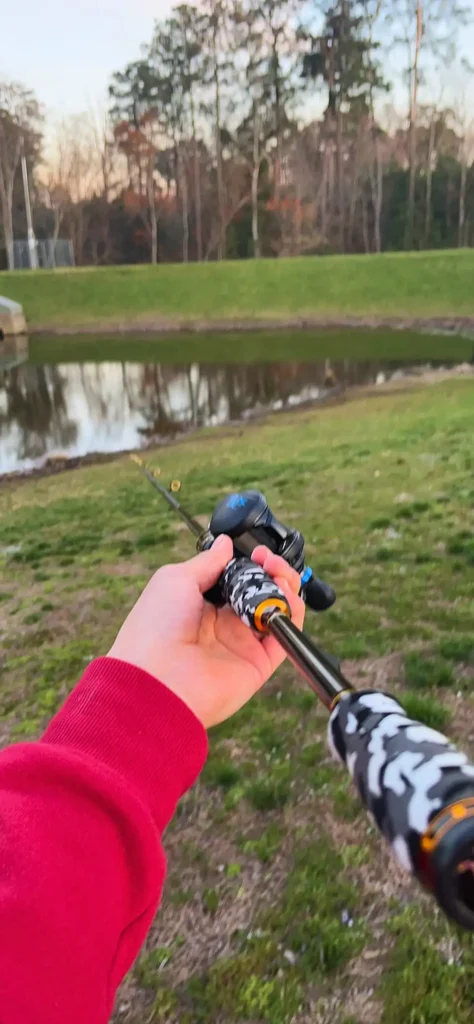
Short bait caster rod:
It has a length range from 5’5’’ to 6’4’’ ft and is considered best for fishing with accuracy at a shorter distance of less than 30 feet. Like short spinning rods, the bait-caster poles are perfect for kayak fishing, where space is confined, and maneuverability is necessary. The rod allows the anglers to make the précised and accurate cast. However, the shorter-bait caster rods increased the accuracy but had limitations regarding casting distance.
Medium bait caster rod:
It has a length range from 6’5” to 8′ feet and is considered the perfect pole for bass fishing due to its versatility, ease of use, and the ability to combine the casting with accuracy in longer distances. This rod type is well-suitable for various fishing conditions, from bank, kayak, or bass boat; it offers adaptability and versatility. It balances accuracy and casting at longer distances, making it ideal for bass fishing techniques such as casting lures, flipping, or working on various rigs.
Long bait caster rod:
It has a length range from 8′ to 9′ ft and is considered the best pole for anglers to catch large and heavy-weight bass in densely covered areas. A long bait-caster rod is perfect for power bass fishing. The anglers using long bait-caster rods aim to target giant bass that typically live in areas of heavy covers like sunken fields of wood or overhanging trees and dense vegetation. Due to the pole’s longer length, the anglers can make a cast at longer distances into highly covered areas, where heavy and oversized bass tend to shelter. Long bait-caster fishing rods are constructed with a power rating (medium to heavy) to handle the weight and fight with the strength of trophy bass. This rod type is paired with lines of 30 to 60 lb or even more to provide strength for targeting the more prominent bass without worrying about line deterioration. Despite its longer length, the longer bait-caster rod provides the perfect accuracy and control of the line. However, skills are required.
What are the essential features to consider in a bait-caster fishing rod?
The following features should be considered in a bait-caster fishing rod:
- Material and quality
- Power and action for specific fishing styles as well as species
- Comfortable grip to handle
- A length that compliments fishing techniques
- Sensitivity for bite detection
- Brand reputation and customer reviews
Fly fishing rod length:
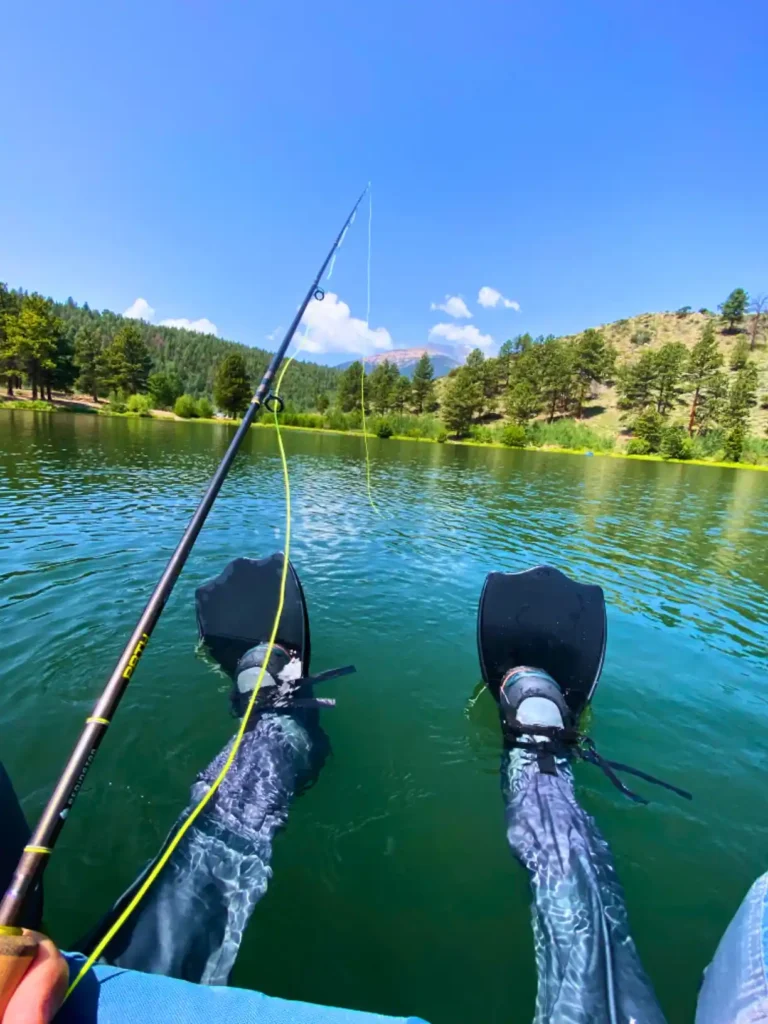
Fly rods are longer than other fishing rods and range from 7 to 9 feet in length. With the help of a fly fishing rod, the fishing method involves using line weight instead of the weight of lures to push the lightweight fly. Because of its longer length compared to other fishing rods, it allows the anglers to cast in extended distances and produce a higher speed of lines for casting accurately. Fly rods are used in diverse fishing environments like rivers, lakes, streams, and saltwater. The extended length also helps to deal with windy weather conditions.
Short fly-fishing rod:
It has a length range of 8 ft or less and is considered perfect for fishing conditions where precise and accurate short casts are needed. Fishing situations like small streams and targeting the pan-fish, this rod is ideal for anglers who want to make cast in tight areas or in small streams, where the casting space is confined and challenging because of overhanging trees or brushes as well as narrow roads of water. This type of rod is usually paired with fly lines of lightweight (3 or 4 weight lines) in order to match the targeted species and fishing conditions. For example, target panfish (sunfish, crappie, or bluegill) in smaller water bodies such as lakes, ponds, or slow-moving rivers.
Medium flying fishing rod:
It has a length range from 8’ to 8’5’’ ft and is considered perfect for anglers due to its all-around performance and capability to adapt to different fishing situations. The medium-flying fishing rod is well recommended for fish species like bass, trout, pan-fish, or saltwater. The rod is the perfect choice for experienced anglers along with beginners.
Long flying fishing rod:
It has a length range from 8’5’’ to 9’’ ft and is considered best for anglers who want to make cast in longer distances by using heavy lines and dealing with windy weather conditions. The primary function of this rod is to provide greater leverage, increasing the line speed and distance. The long fly fishing rod is proper in larger bodies of water, such as rivers, lakes, and saltwater, by allowing them to target distant fish and cover the larger space.
Surfcasting fishing rod length:
The surf rods are longer rods that vary in length from 7 to 14 feet; some are between the 10 to 12 feet range with longer handles. These rods are considered the longest compared to previous ones and are used by fishermen to cast longer distances ranging from the beach to the surf. The rod has both revolving and spinning spool versions of the reel.
However, expert anglers can cast at a distance of at least 100 yards with the help of a surf casting rod. The casting distance of over 300 yards using the surf casting rod is mentioned as a world record because we usually don’t require a more considerable distance to catch the fish.
Short surf casting:
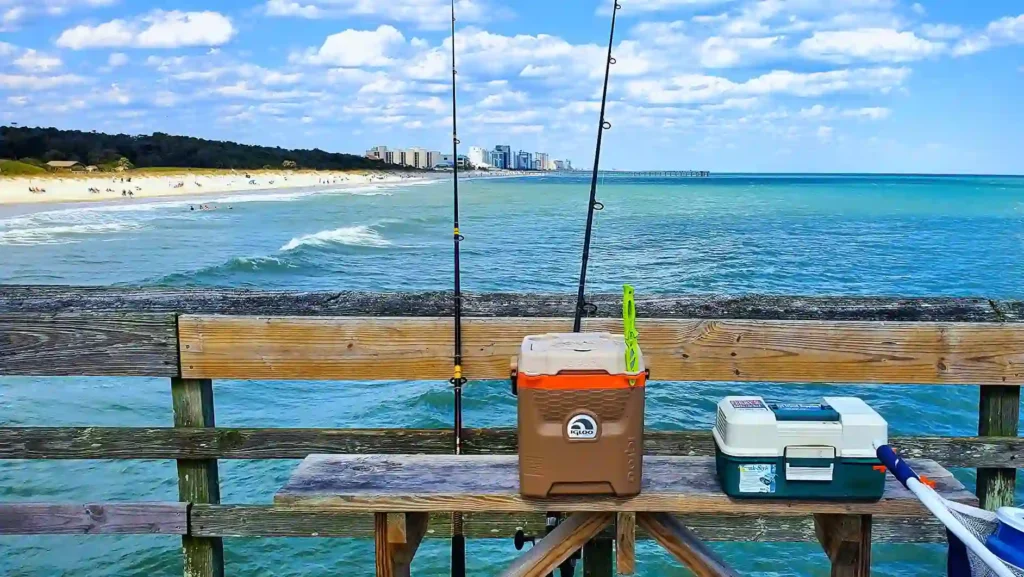
It has a length of 9 ft and enables the anglers to target the fish beyond the breaking waves. However, it provides perfect control over the line and remarkable capability to set the hooks and fight fish. The 9 feet rod is best for managing the bar in rough conditions.
medium surf casting:
It has a length ranging from 10 to 12 ft and is considered best for many surf fishing situations. They provide a balance between the longer casting distances and maintaining maneuverability. The rod length is perfect for anglers to enjoy the more considerable casting distances while still being able to perfectly handle the fishing rod with proper grip for an extended duration.
The rod is best suitable for various fishing situations targeting species, such as surfperch, redfish, and striped bass.
Long surf casting:
The long surf casting length varies from 12 to 14 ft and is advantageous for targeting larger fish species like tuna. These species require longer cast to reach their feeding grounds. So, the long surfing rod provides an extended length to get those points underwater depth. Furthermore, longer rods are beneficial when the fishing place is too crowded by allowing the anglers to cast beyond the busy sections, accessing the fishing spots with less pressure.
Boat fishing rod length:
These rods are shorter and range in size from 6 to 7 ft. The main reason behind their shorter distance is because of need for more space on a boat.
When using the boat rods, the anglers not casting the bait far distance. Instead, they use the fishing technique called dropping or vertical jigging, where the lure or bait can lower into the water column in the vertical direction. The method is likewise ice fishing, where the fisherman drops the line down into the ice hole.
Trolling fishing rod:
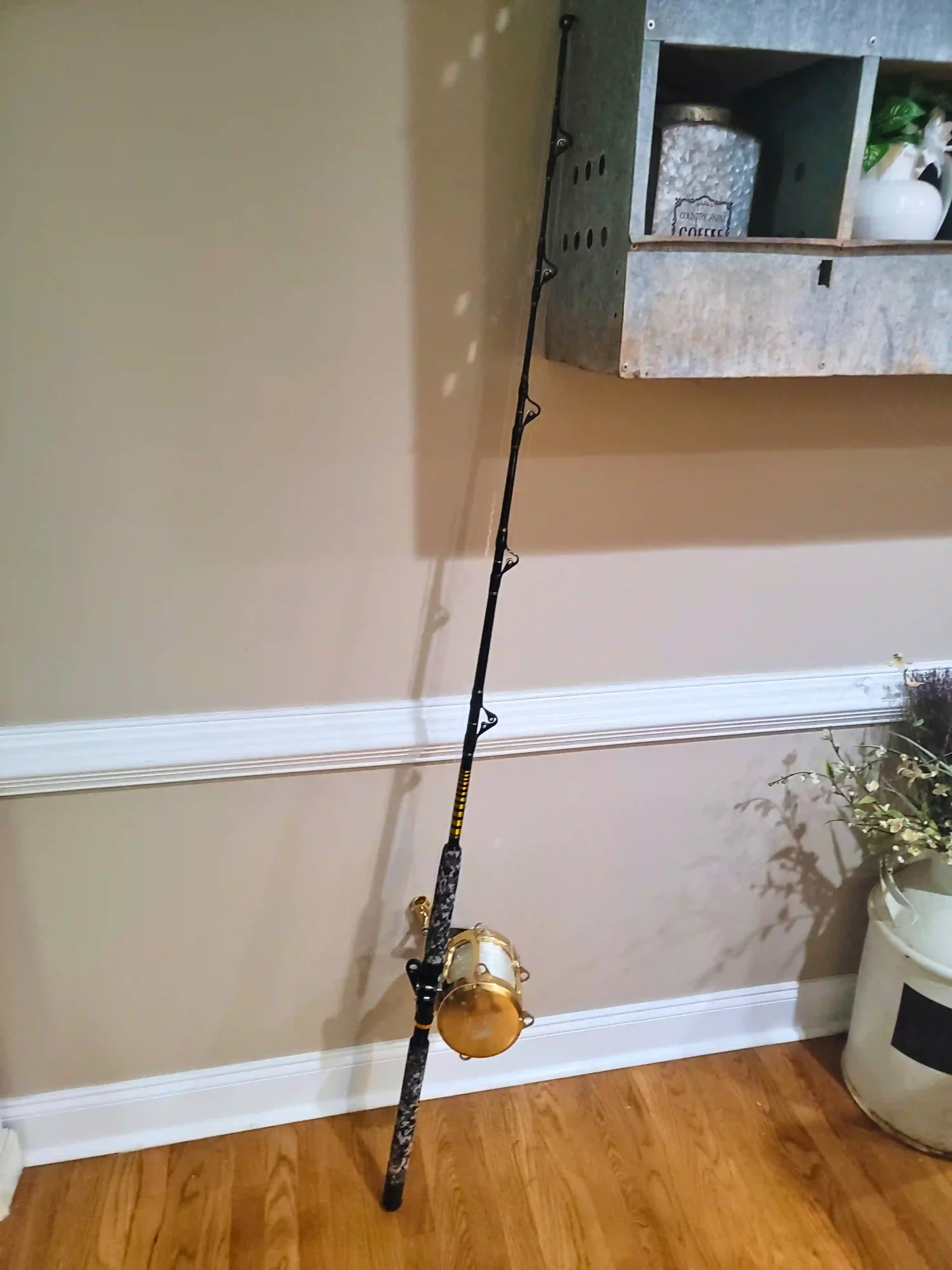
The trolling fishing rods are longer than other fishing rods, except for surf rods. These rods are in the market with different lengths, varying from 8 to 14 ft.
However, most anglers prefer to choose a trolling rod of 9 to 11 ft.
The extended length of this rod serves multiple purposes to the anglers; one of the best reasons is that it allows the fishermen to troll using multiple rods without worrying about getting tangled in their lines. The trolling rod length compliments when using the downriggers.
Because the length of the rod needs to be long, it accommodates the bending of the rod at the water surface, at the point where the downrigger is located.
By using a downrigger and the appropriate length of trolling rod, the fishermen can easily target the fish present in the depth of water and increase their chances of attraction.
Short trolling fishing rod:
The short trolling length usually is 9 ft or less and provides comfort when used in the boat. The shorter length of this rod allows for accurate casting and maneuverability. These two factors make it suitable when trolling nearby for targeting specific fish.
Medium trolling fishing rod:
The long trolling rods range from 11 to 14 ft in length and are best used for fishing where accuracy is less required. The extended length is advantageous for maneuvering the rods around the hurdles on a boat-like motor as well as other rods.
Long bait caster rod:
It has a length range from 8′ to 9′ ft and is considered the best pole for anglers to catch large and heavy-weight bass in densely covered areas. A long bait-caster rod is perfect for power bass fishing. The anglers using long bait-caster rods aim to target giant bass that typically lives in areas of heavy covers like sunken fields of wood or overhanging trees and dense vegetation. Due to the pole’s longer length, the anglers can make a cast at longer distances into highly covered areas, where heavy and oversized bass tend to shelter. Long bait-caster fishing rods are constructed with a power rating (medium to heavy) to handle the weight and fight with the strength of trophy bass. This rod type is paired with lines of 30 to 60 lb or even more to provide strength for targeting the more prominent bass without worrying about line deterioration. Despite its longer length, the longer bait-caster rod provides the perfect accuracy and control of the line. However, skills are required.
Ice fishing rod length:
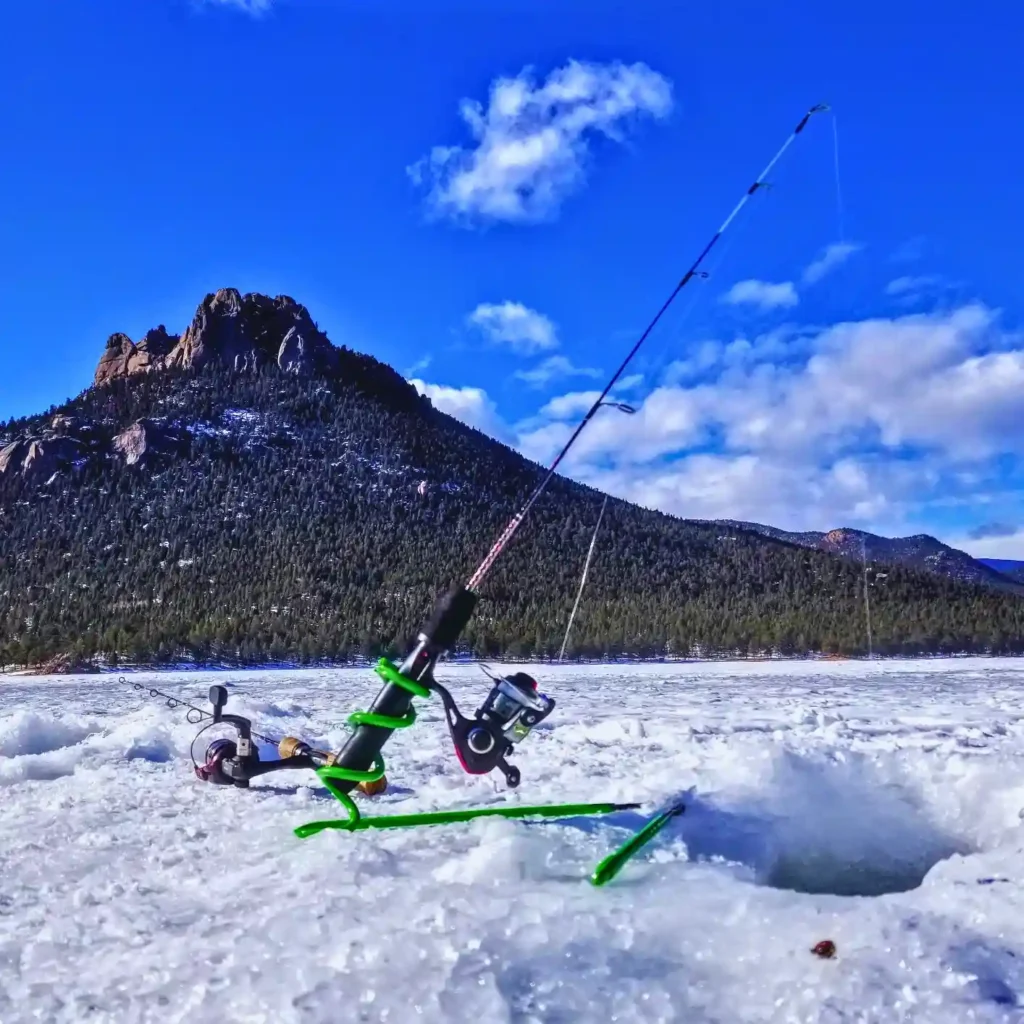
Ice fishing rod is too short, ranging from 20 to 48 inches long. However, the length ranging from 28 to 36 inches is most commonly used by anglers.
The ice fishing rod with a particular length is specially designed to catch the fish under the ice. Fishermen lower their baits or lures through the hole in the ice to reach the fish. The shorter length of the fishing rod makes it ideal for moving the rod in limited space.
Furthermore, the shorter length of the ice fishing rod allows the fishermen to stay closer to the ice hole until the fish bite is undetected. The fishermen can quickly respond in response to bite and set the hook because of closer proximity to the fishing rod.
Ideal Length of fishing Rod for saltwater shore fishing:
Fishing from a boat and shore differs concerning positioning and casting distance. For shore fishing, rods that range from 9 to 12 ft are considered ideal.
However, the fishing rod length of 9 ft is recommended for beginners because it balances the control and distance of casting. This type of balance is valuable for beginners to understand and enhance their fishing skills.
Ideal length of fishing rod for saltwater inshore fishing:
The length of fishing rods in saltwater inshore ranges from 6.5 to 7.5 ft. This length is also perfect for shallow water areas inshore, where longer casting distances are unnecessary.
The shorter rods have several advantages for inshore fishing. First, they provide control and maneuverability for anglers to detect around the structures like mangroves, piers, or docks.
Moreover, they tend to provide more sensitivity that enables the fishermen to detect the bite and other movement of fish. These rods are of lighter weight and comfortable to handle for longer duration.
Best fishing rod length for beginners :
It’s recommended for beginners to use around the fishing rod of length 7 ft. The 7 ft length of the fishing rod provides a balance between accuracy, casting distance, and ease of use, making it the perfect choice for beginners.
Best fishing rod length for a child:
Engaging your child in any physical activity, like fishing, is a good idea. However some rods are too long, and the child faces difficulty holding onto the rod. However, giving your child a short rod of not more than 3 – 4 feet in length is essential.
For the first time, your child will use a fishing rod out of curiosity and fun but not for catching fish.
But with time, your child’s experience grows, leading them to become professional and expert anglers.
As the child grows, increase the length of a fishing rod.
Furthermore, short fishing rods, also known as cane poles or telescopic poles, are considered the perfect option for the child. These rods are convenient because they have a fixed line attached to the tip and do not require any reel or line guides.
So, an ideal option for directly lowering the bait into the water.
Does the fishing rod fabric come into play along with length?
Yes: Along with fishing rod length, the material of the fishing rod also matters.
The fishing rods come in two types of materials; graphite and fiberglass. Both kinds of materials are suitable for different fishing scenarios;
Graphite rods:
They are also known as carbon fiber rods because they are made from the fiber of carbon with a blend of the resin matrix. The rod is lightweight and provides remarkable sensitivity. Due to their stiff nature, the rods control the direction and distances. The rod gives an enhanced power rating during the hook-set, allows it to deal with larger fish species, or is perfect for conditions that need a quick and robust hook-set.
Fiberglass rods:
The fiberglass fishing rods are made by weaving together the fiberglass and resin. The rod is best known for its flexibility and durability. The bendy nature of this material fishing rod made it perfect for catching fish with treble hooks. However, the flex ability of this rod aids in absorbing the early shock during the setting phase of the hook, decreasing the risk factor of parting away the hook from of mouth of the fish. Due to its flexible nature, it allows cast on longer distances and helps to release and regain the energy throughout the casting motion.
How weather conditions can affect rod size requirements
Windy:
In windy conditions, the longer fishing rod can be advantageous because the longer length can provide more leverage and power and aid you in casting your lure or bait against the wind much more effectively.
waves:
Likewise, a longer rod balances the flexibility, length, and power to survive the wave while fishing, enhancing your performance.
An additional thing to remember when buying a fishing rod
Along with length, you must keep in mind the following fishing rod components:
Rod handle
While purchasing the desired fishing rod length, remember that the handle should be comfortable to hold and provide full grip.
Some anglers prefer to use a split grip (the grip divided into two sections reduces weight and gives balance and sensitivity). This handle is widely used in spinning and bait-casting rods.
The EVA form handle (EVA= Ethylene-vinyl acetate) is soft, light-weighted, and offers shock absorption properties. These handles are perfect for fishing for longer hours, especially in saltwater.
Other handles, such as cork handles, provide a perfect grip even when wet, and pistol grip handles provide a secure and comfortable hold.
weight
The weight of the fishing rod is closely linked to the length of the fishing rod. Lighter fishing rods are shorter and provide more sensitivity and maneuverability. At the same time, weightier fishing rods are more extended and designed to deliver a more powerful fishing experience. Here you can get a complete weight guide for fishing rods.
Pro and Cons of Short and Long Fishing rod
Features | Short Rod | Long Rod |
Increased portability | ✓ | X |
Large casting distances | X | ✓ |
Better maneuverability in tight spots | ✓ | X |
Less fatigue over extended periods | ✓ | X |
Greater sensitivity to bites | ✓ | X |
More line control | X | ✓ |
Easier close-quarters combat with fish | ✓ | X |
High leverage for a hook set | X | ✓ |
Reduced chances of snagging (in some scenarios) | X | ✓ |
Increased leverage for pulling out large fish | X | ✓ |
Typically more durable | ✓ | X |
Might not reach deeper or distant waters | ✓ | X |
Typically more affordable | ✓ | X |
Easier to handle | ✓ | X |
High accuracy | ✓ | X |
Perfect for streams and vegetation places | ✓ | X |
FAQs
How to prevent the backlash on a bait-caster fishing rod?
To prevent the backlash, also called ”bird’s nest”, on a bait-caster fishing rod, consider the following tips and tricks:
- Adjust the spool tension knob at the side of the reel by loosening or tightening it to control the rotational speed of the spool. An adjusted spool prevents the spool from spinning too quickly.
- Engage the brake system according to the manufacturer’s instructions to help slow down the spool, minimizing the risk of backlash.
- When the bait reaches the point of target, increase the pressure along with slowing down the pool to prevent overruns.
- Gradually increase the distance of casting with the addition of practice and experience to prevent the backlash.

1 thought on “Fishing rod sizes and uses : how to choose The right one”